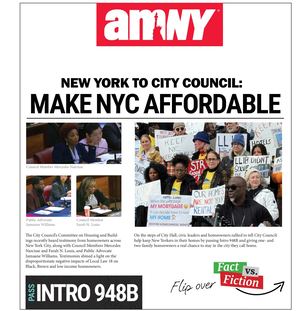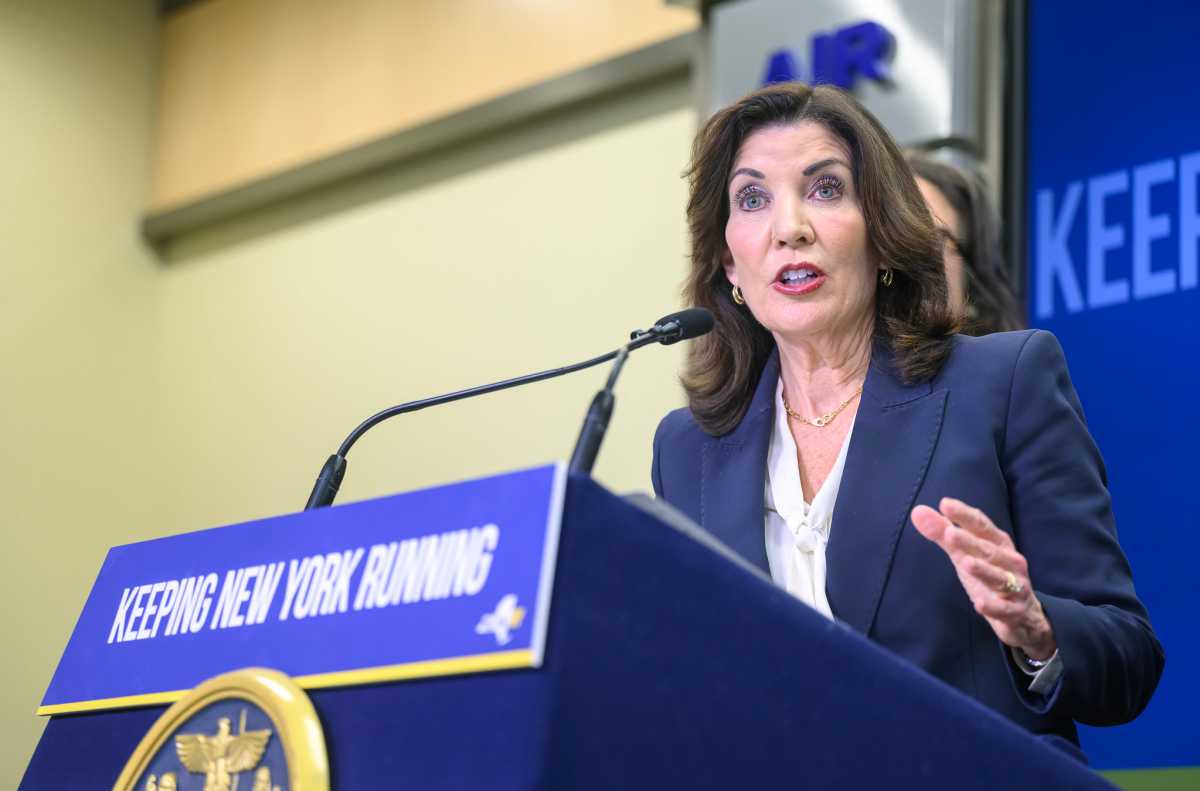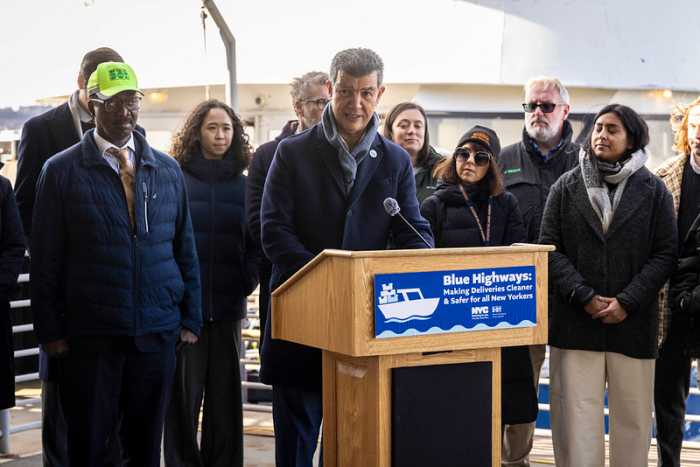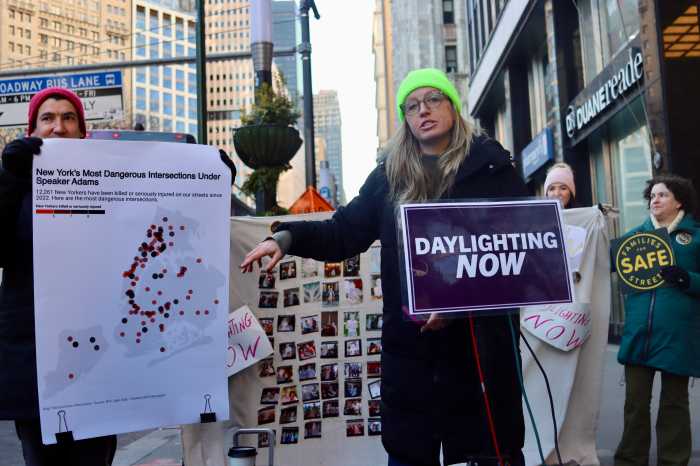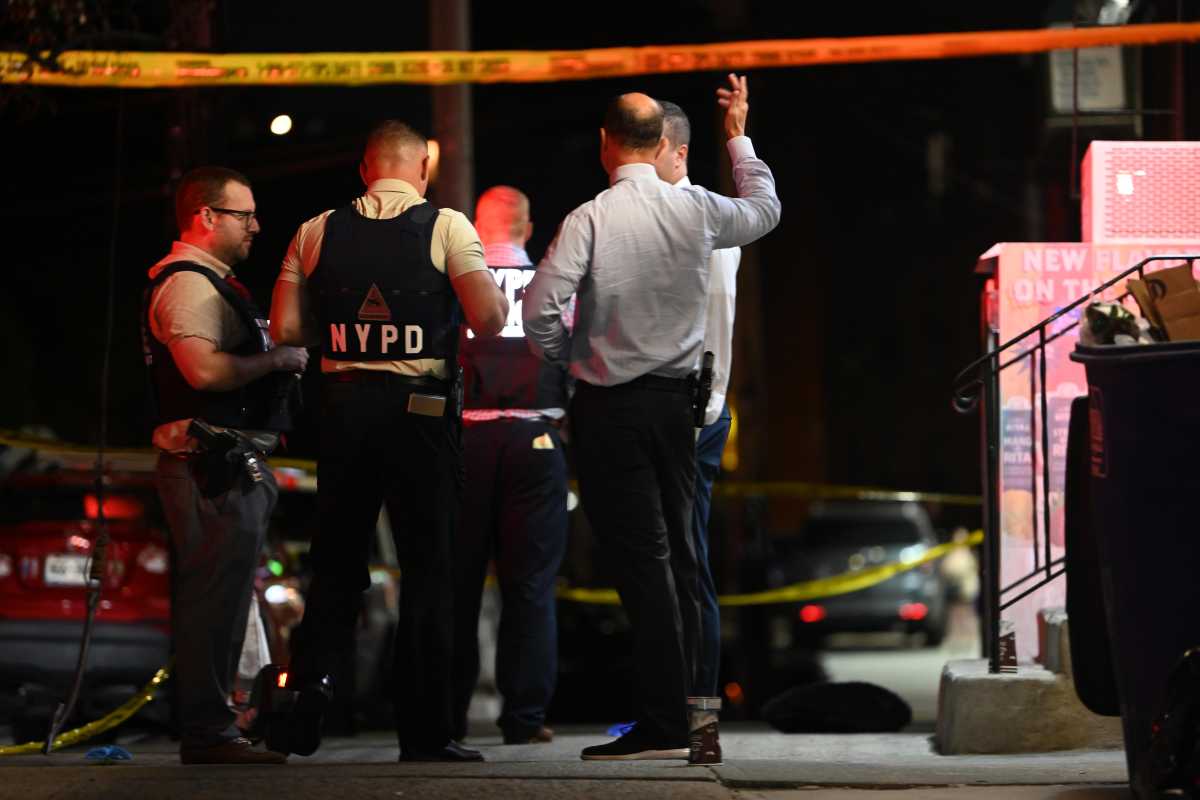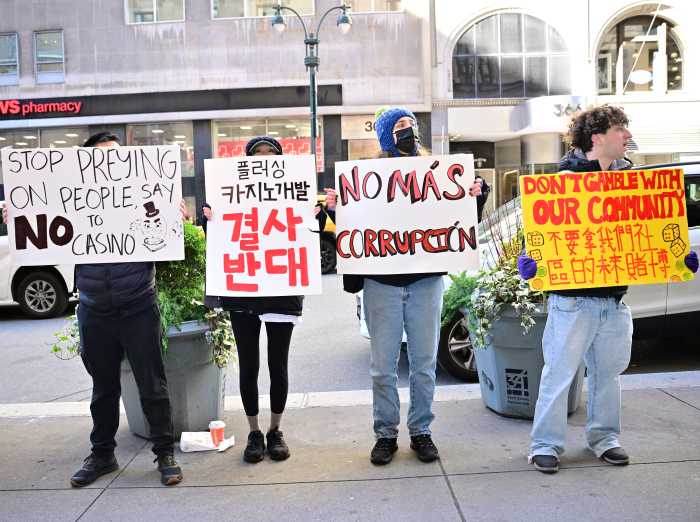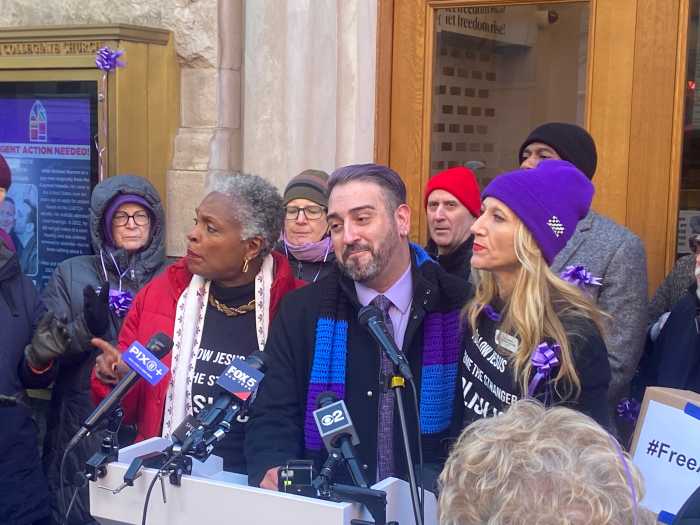Gov. Kathy Hochul suggested Monday that the MTA’s $68 billion capital plan may have to be trimmed amid concerns over how to fund it.
The MTA Board approved the five-year spending proposal for construction, maintenance, and repairs last week, sending it to Albany for review by the state’s Capital Program Review Board before proceeding onward to the State Legislature and the governor’s desk.
But speaking to reporters on Sept. 30, Hochul said the size of the MTA’s capital plan is not a done deal, indicating she may want the spending proposal to shrink in the final approved by Albany.
“First of all, there’s not been a final number associated with the MTA capital plan,” Hochul said at an unrelated press conference. “I would suggest that we examine the whole course of business: that there’s a proposal. It’s approved by the MTA board. It goes to another board. then it goes to the legislature, so there is still a process to know what the final numbers are.”
The MTA has only secured about half of the money it needs to fund the new five-year plan; the rest must be appropriated by Albany. When combined with the $16.5 billion axed from the current capital plan by the pause on congestion pricing, the MTA is short nearly $50 billion of where it says spending needs to be to ensure the subway remains running in working order, let alone be modernized.
Hochul has said she hopes to “secure as much funding as possible” for the plan in negotiations with the feds, state Legislature, and New York City, all of whom chip in a portion.
Hochul’s comments came just hours after she told an auditorium full of aspiring MTA contractors that the new capital plan will present “so many jobs and opportunities,” particularly for minority-and-women-owned business enterprises (MWBEs).
MTA Chair and CEO Janno Lieber has previously called the spending plan “conservative” because it mainly focuses on “state of good repair” work instead of flashy expansion projects. The bulk of spending on the new plan concerns things such as replacing aged-out railcars, signals, and power systems along with structural repairs on elevated lines and tunnels, many of which are over 100 years old like the tubes bringing Metro-North trains into Grand Central.
“While each project individually may not have its own cost spelled out, we do know the cost of not doing this critical work,” said Lisa Daglian, head of the Permanent Citizens Advisory Committee to the MTA. “Just look at the Summer of Hell.”
Indeed, cutting the capital plan further would require deferring either critical state of good repair work or the Interborough Express — the Brooklyn-to-Queens light rail project that Hochul has described as her “baby” — said Rachael Fauss, senior policy advisor at Reinvent Albany whose research focuses on the MTA.
“The MTA’s been very clear what its needs are. And if she cuts this, unless she cuts her IBX, she’s cutting state of good repair work,” said Fauss. “It’s a need-to-have capital plan, not a nice-to-have capital plan.”
Fauss noted that while wrangling over the capital plan in Albany is typical, it usually involves legislators attempting to include funding for pet projects, not the governor seeking to shrink its size. That’s because the governor already exerts significant control over the MTA as is, appointing a plurality of board members as well as the chair.
“The oversight board, the Capital Program Review Board, I think the utility of it is much more for the Legislature to have a buy-in process so they can weigh in before the budget process, rather than the governor,” said Fauss.
The MTA declined to comment for this story.
Read More: https://www.amny.com/nyc-transit/
